
SimPEG Framework
Abstract¶
Simulations and inversions of electromagnetic geophysical data are paramount for discerning meaningful information about the subsurface from these data. Depending on the nature of the source electromagnetic experiments may be classified as time-domain or frequency-domain. Multiple heterogeneous and sometimes anisotropic physical properties, including electrical conductivity and magnetic permeability, may need be considered in a simulation. Depending on what one wants to accomplish in an inversion, the parameters which one inverts for may be a voxel-based description of the earth or some parametric representation that must be mapped onto a simulation mesh. Each of these permutations of the electromagnetic problem has implications in a numerical implementation of the forward simulation as well as in the computation of the sensitivities, which are required when considering gradient-based inversions. This paper proposes a framework for organizing and implementing electromagnetic simulations and gradient-based inversions in a modular, extensible fashion. We take an object-oriented approach for defining and organizing each of the necessary elements in an electromagnetic simulation, including: the physical properties, sources, formulation of the discrete problem to be solved, the resulting fields and fluxes, and receivers used to sample to the electromagnetic responses. A corresponding implementation is provided as part of the open source simulation and parameter estimation project SimPEG (http://simpeg.xyz). The application of the framework is demonstrated through two synthetic examples and one field example. The first example shows the application of the common framework for 1D time domain and frequency domain inversions. The second is a field example that demonstrates a 1D inversion of electromagnetic data collected over the Bookpurnong Irrigation District in Australia. The final example is a 3D example which shows how the modular implementation is used to compute the sensitivity for a parametric model where a transmitter is positioned inside a steel cased well.
Full Paper¶
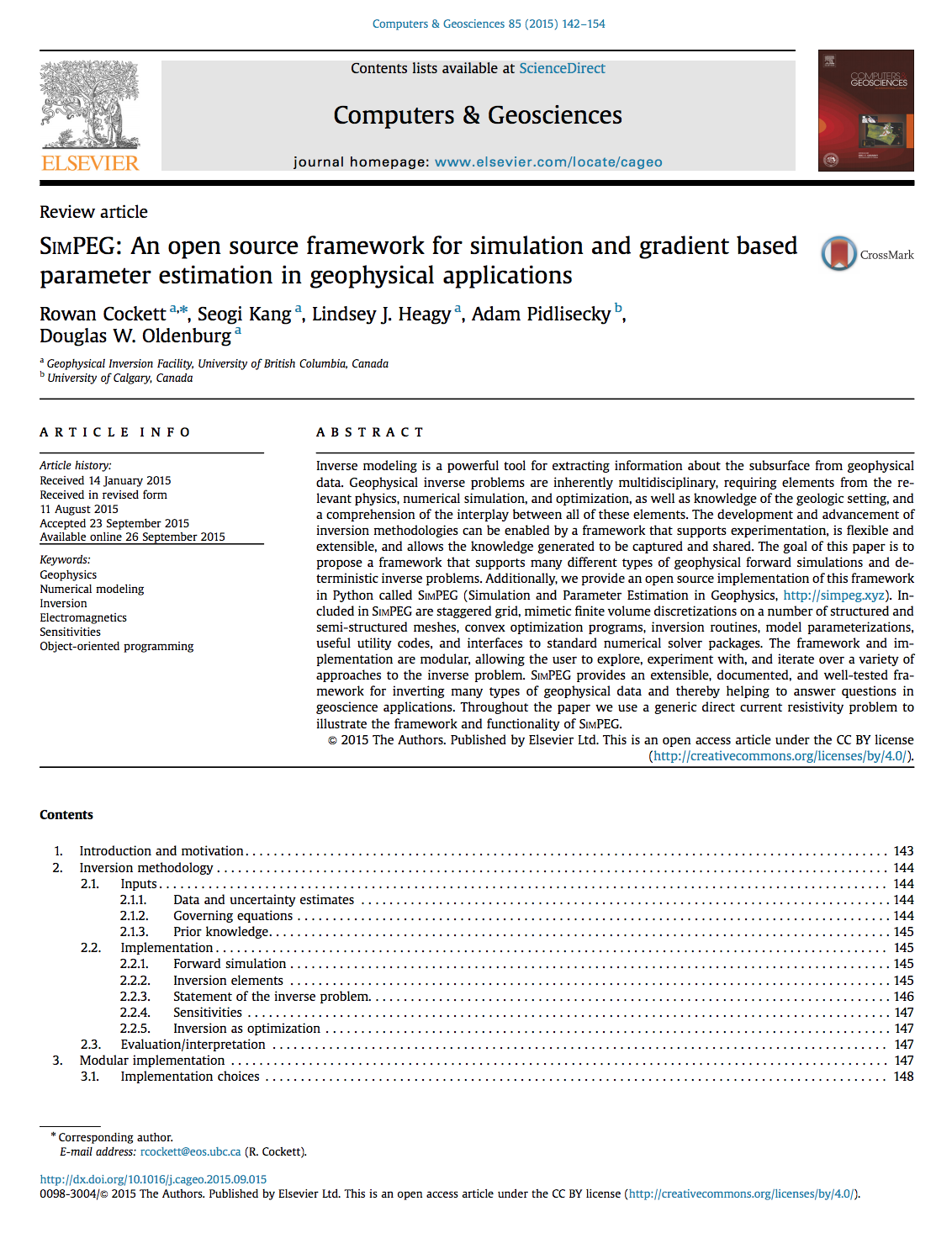
An open source framework for simulation and gradient based parameter estimation in geophysical applications
Highlights¶
We propose a framework for geophysical simulations and gradient-based inversions.
We provide an open source Python implementation of this framework called SimPEG.
SimPEG includes forward simulation machinery using finite-volume meshes.
SimPEG includes optimization and model parameterizations for the inverse problem.
The geophysics simulation python implementation is open source and is well documented and tested.
Favorite Parts¶
As researchers, we require the ability to interrogate and extend ideas; this must be afforded by the tools that we use. Accessibility and extensibility are the primary motivators for this work.
The development of new methodologies to address the evolving challenges in the geosciences will build upon and extend these standard practices, requiring experimentation with and recombination of existing techniques. To facilitate this combinatorial experimentation, we have organized the components of geophysical inverse problems in a comprehensive, modular framework.
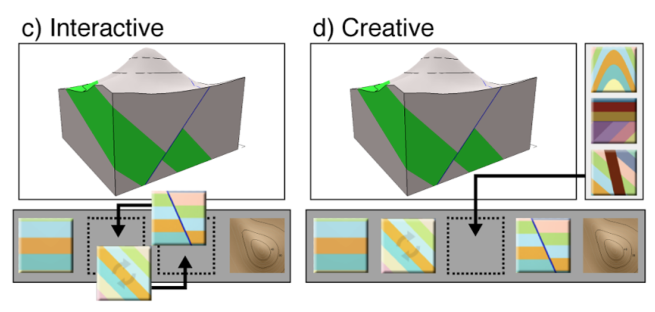
Reflecting on creating tools for technical communication.
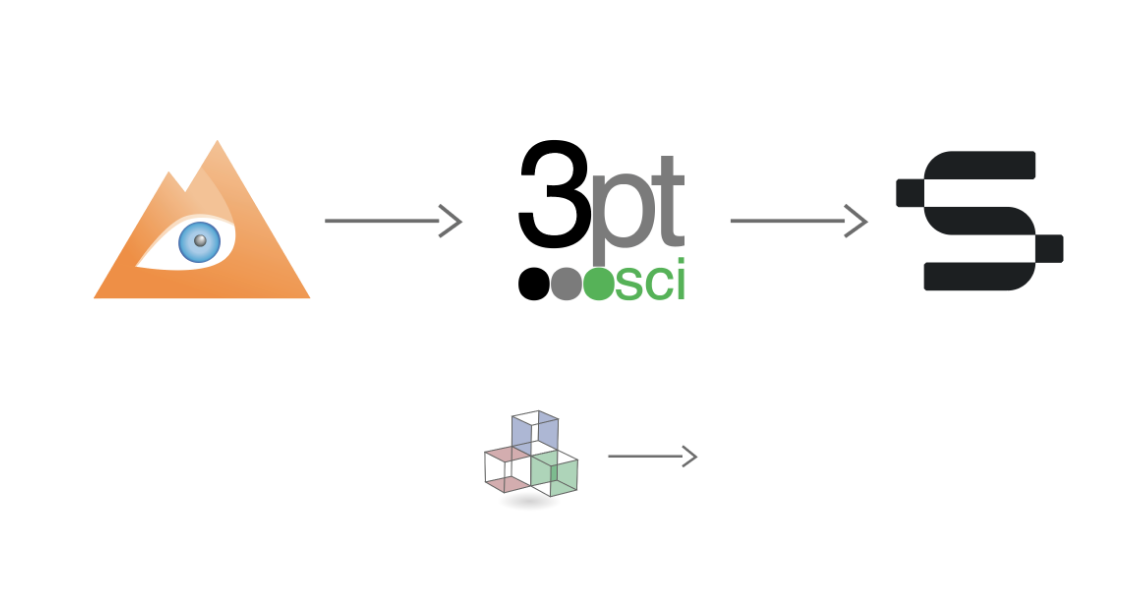
UCalgary Geosicence - Friday Afternoon Talk Series

Podcast with Matt Hall and Graham Ganssle
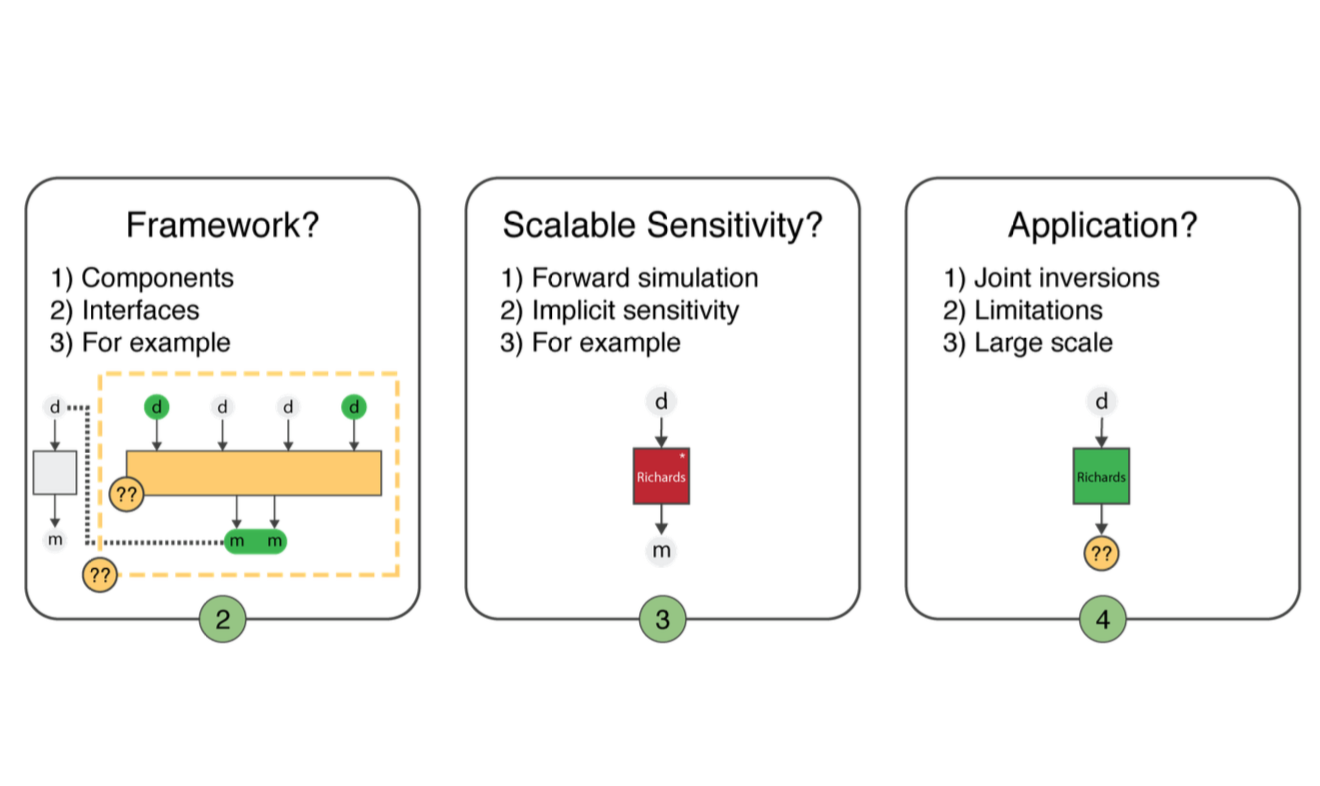
A framework for geophysical inversions with application to vadose zone parameter estimation
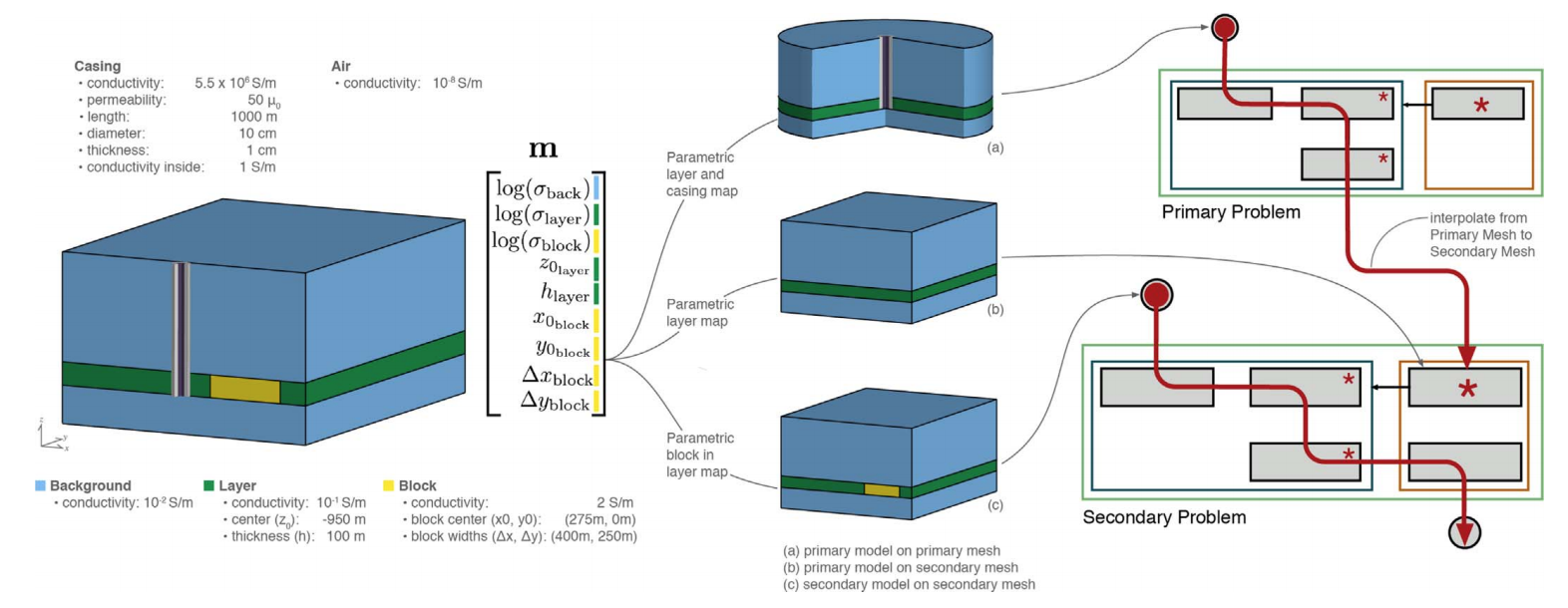
A framework for simulation and inversion in electromagnetics
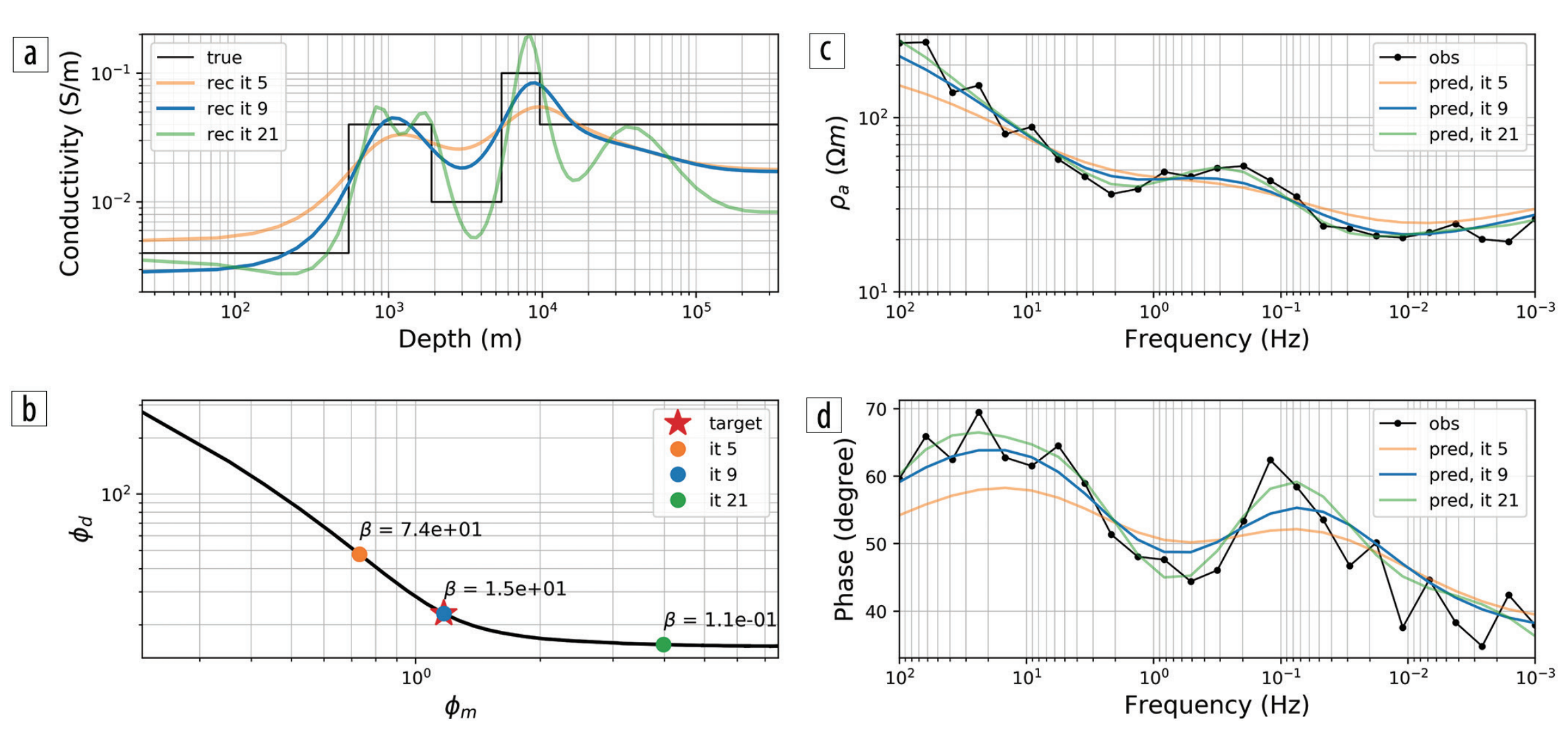
Exploring nonlinear inversions: A 1D magnetotelluric example